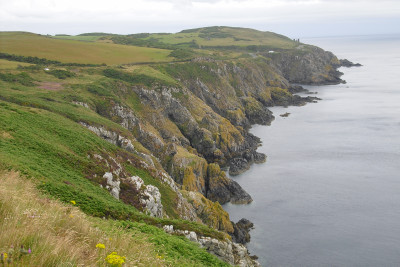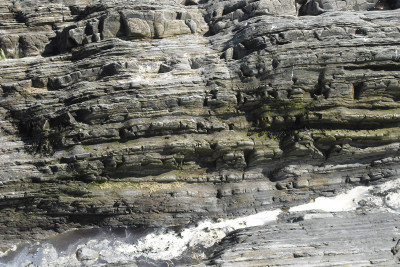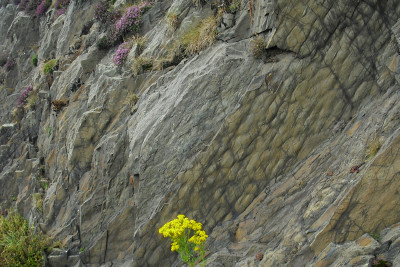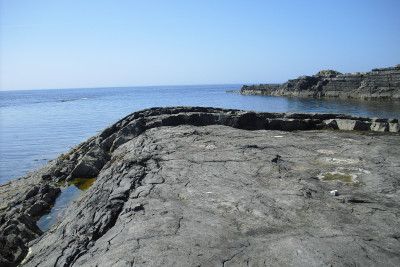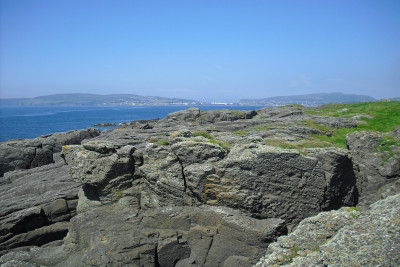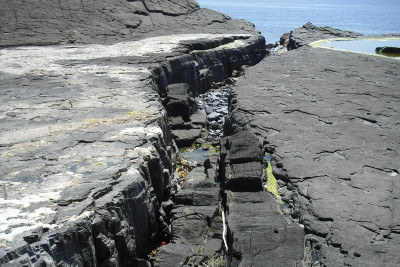| Monday 25th - Thursday 28th July 2011 | ||||||||||||||||||||||||
| ISLE OF MAN | ||||||||||||||||||||||||
| Tour: self | ||||||||||||||||||||||||
| Weather: Dry and sunny. | ||||||||||||||||||||||||
Summary of Geology: The geology of the Isle of Man is dominated by "slates" of the Manx Group, which were deposited as alternating marine sandstones and mudstones around 480 Ma, at a latitude of about 60 degrees south, on the margins of the Gondwana supercontinent. Rocks of the Dalby Group, found in more northerly parts of the island, are slightly younger and were formed as marine sediments at a lower southern hemisphere latitude on the margins of the continent of Laurentia. Closure of the Iapetus Ocean at about 420 Ma resulted in continental collision and formation of the Caledonian Mountains, bringing together the rocks of the above Groups and creating their characteristic steep dips. In some areas of the island, limestones laid down in equatorial early Carboniferous seas, 350 Ma, over the now united Britain are preserved (as at Castletown). No Upper Carboniferous rocks are preserved on the island, although hydrothermal activity believed to date from this time formed veins of copper, lead and zinc which have been an important economic resource (as at Laxey). The limestones were gently folded during the Variscan Orogeny, 290 Ma. Permian and Triassic rocks are preserved only beneath the flat northern plain of the island. Volcanism associated with the break up of the Atlantic Ocean about 60 Ma produced magma-filled intrusions (dykes) with a NW - SE orientation.
|
||||||||||||||||||||||||
|
||||||||||||||||||||||||
